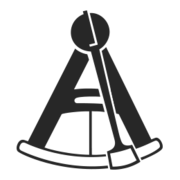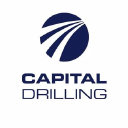
Amerigo Resources Ltd
TSX:ARG


| US |

|
Johnson & Johnson
NYSE:JNJ
|
Pharmaceuticals
|
| US |

|
Berkshire Hathaway Inc
NYSE:BRK.A
|
Financial Services
|
| US |

|
Bank of America Corp
NYSE:BAC
|
Banking
|
| US |

|
Mastercard Inc
NYSE:MA
|
Technology
|
| US |

|
UnitedHealth Group Inc
NYSE:UNH
|
Health Care
|
| US |

|
Exxon Mobil Corp
NYSE:XOM
|
Energy
|
| US |

|
Pfizer Inc
NYSE:PFE
|
Pharmaceuticals
|
| US |

|
Palantir Technologies Inc
NYSE:PLTR
|
Technology
|
| US |

|
Nike Inc
NYSE:NKE
|
Textiles, Apparel & Luxury Goods
|
| US |

|
Visa Inc
NYSE:V
|
Technology
|
| CN |

|
Alibaba Group Holding Ltd
NYSE:BABA
|
Retail
|
| US |

|
JPMorgan Chase & Co
NYSE:JPM
|
Banking
|
| US |

|
Coca-Cola Co
NYSE:KO
|
Beverages
|
| US |

|
Walmart Inc
NYSE:WMT
|
Retail
|
| US |

|
Verizon Communications Inc
NYSE:VZ
|
Telecommunication
|
| US |

|
Chevron Corp
NYSE:CVX
|
Energy
|
Utilize notes to systematically review your investment decisions. By reflecting on past outcomes, you can discern effective strategies and identify those that underperformed. This continuous feedback loop enables you to adapt and refine your approach, optimizing for future success.
Each note serves as a learning point, offering insights into your decision-making processes. Over time, you'll accumulate a personalized database of knowledge, enhancing your ability to make informed decisions quickly and effectively.
With a comprehensive record of your investment history at your fingertips, you can compare current opportunities against past experiences. This not only bolsters your confidence but also ensures that each decision is grounded in a well-documented rationale.
Do you really want to delete this note?
This action cannot be undone.

| 52 Week Range |
1.56
4.18
|
| Price Target |
|
We'll email you a reminder when the closing price reaches CAD.
Choose the stock you wish to monitor with a price alert.

|
Johnson & Johnson
NYSE:JNJ
|
US |

|
Berkshire Hathaway Inc
NYSE:BRK.A
|
US |

|
Bank of America Corp
NYSE:BAC
|
US |

|
Mastercard Inc
NYSE:MA
|
US |

|
UnitedHealth Group Inc
NYSE:UNH
|
US |

|
Exxon Mobil Corp
NYSE:XOM
|
US |

|
Pfizer Inc
NYSE:PFE
|
US |

|
Palantir Technologies Inc
NYSE:PLTR
|
US |

|
Nike Inc
NYSE:NKE
|
US |

|
Visa Inc
NYSE:V
|
US |

|
Alibaba Group Holding Ltd
NYSE:BABA
|
CN |

|
JPMorgan Chase & Co
NYSE:JPM
|
US |

|
Coca-Cola Co
NYSE:KO
|
US |

|
Walmart Inc
NYSE:WMT
|
US |

|
Verizon Communications Inc
NYSE:VZ
|
US |

|
Chevron Corp
NYSE:CVX
|
US |
This alert will be permanently deleted.
Amerigo Resources Ltd
Amerigo Resources Ltd. is engaged in the production and sale of copper and molybdenum concentrates. The company is headquartered in Vancouver, British Columbia. The MVC operation is located approximately 8 kilometer east of the city of Rancagua and over 90 kilometer south of Chile’s capital city of Santiago. MVC is involved in reprocessing tailings generated from the El Teniente mine.

Amerigo Resources Ltd. is engaged in the production and sale of copper and molybdenum concentrates. The company is headquartered in Vancouver, British Columbia. The MVC operation is located approximately 8 kilometer east of the city of Rancagua and over 90 kilometer south of Chile’s capital city of Santiago. MVC is involved in reprocessing tailings generated from the El Teniente mine.
Revenue Growth: Q3 revenue reached $52.5 million, up from $45.4 million in Q3 2024, driven by stable copper prices and strong moly contributions.
Profitability: Net income was $6.7 million, more than doubling the $2.8 million earned in Q3 2024, with EPS of $0.04.
Cash Flow & Dividend: Operating cash flow was $12.4 million and free cash flow to equity was $11.1 million; Amerigo increased its quarterly dividend by 33% to CAD 0.04 per share after fully repaying its debt.
Debt-Free Status: The company achieved a debt-free balance sheet in October, repaying $7.5 million, freeing up significant future cash for shareholders.
Production Guidance: Copper production guidance was revised down slightly to 60–61.5 million pounds after an accident at El Teniente reduced tailings flow, but operations quickly recovered.
Cost Control: Cash cost per pound dropped to $1.80, and the annual cash cost guidance remains at $1.93 per pound, excluding labor bonus costs.
Copper Market Outlook: Management highlighted a global copper supply deficit and expects a volatile but elevated price environment, with potential changes to industry royalty and smelter charge structures.
Labor Agreement: A new 3-year collective agreement was signed in October, providing labor stability through 2028.































